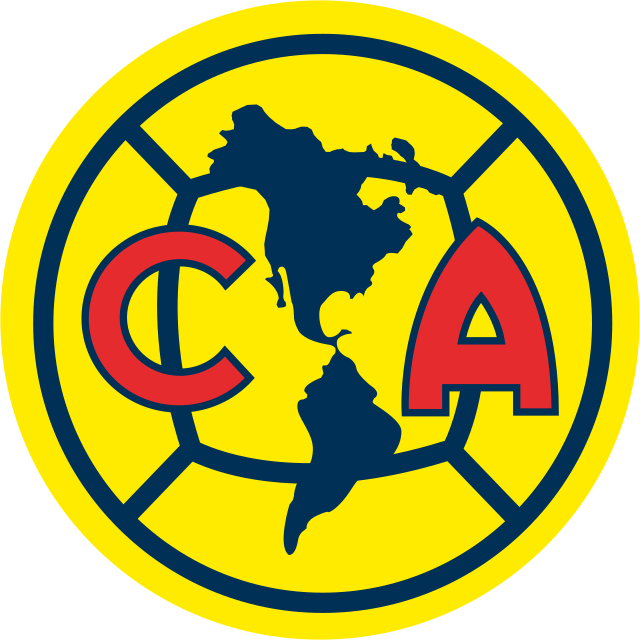Club América, based in Mexico City, is one of the most successful and storied football clubs in Mexico and Latin America. Founded in 1916, the club has a rich history marked by numerous titles, intense rivalries, and a passionate fan base. Known for its distinctive yellow and blue colors and the iconic eagle emblem, Club América has become synonymous with Mexican football excellence.
Table of Contents
### Early History and Founding
Club América was established on October 12, 1916, by a group of young football enthusiasts led by Rafael Garza Gutiérrez and Germán Nuñez Cortina. The club’s formation coincided with the celebration of Columbus Day, a significant date in Latin American history, which is why it was named “América.” The founders aimed to create a team that would represent not just a neighborhood or a social class but the entire country.In its early years, Club América faced numerous challenges, including the lack of financial resources and competition from more established teams. However, the club quickly gained recognition for its commitment to promoting Mexican players, in contrast to other teams that relied heavily on foreign talent. This focus on homegrown talent became a defining characteristic of the club.
### Rise to Prominence
Club América’s rise to prominence began in the 1920s and 1930s when it started to win local and regional championships. However, the club’s major breakthrough came in 1959 when Emilio Azcárraga Milmo, the owner of Televisa, one of the largest media conglomerates in the world, took over the club. Under Azcárraga’s ownership, América received significant financial backing, which allowed the club to attract top talent and build a strong team.In the 1960s and 1970s, Club América emerged as a dominant force in Mexican football. The club won its first professional league title in 1965-66 and followed it up with several more championships in the coming decades. The team’s success on the field was complemented by the rise of the “Águilas” (Eagles) as a cultural icon, with their matches regularly broadcasted on Televisa, further solidifying their popularity.

### Success
In the 1980s and 1990sThe 1980s are often considered the golden era of Club América. During this period, the team won numerous domestic titles and established itself as the most successful club in Mexican football. Under the management of coaches like Carlos Reinoso and Jorge Vieira, América won five league titles in the 1980s (1983–84, 1984–85, Prode-85, 1987–88, and 1988–89). The team also won the Copa Interamericana in 1977 and 1991, solidifying its status as a top club in the Americas.This era was also marked by the emergence of legendary players such as Carlos Hermosillo, Hugo Sánchez, and Cuauhtémoc Blanco. These players became household names, not just in Mexico but across Latin America, and their contributions were instrumental in América’s dominance.The 1990s saw América continue to be competitive, although they faced tougher challenges from other clubs. Despite this, the team managed to win the CONCACAF Champions’ Cup (now known as the CONCACAF Champions League) in 1992 and 1993, reinforcing their status as one of the premier clubs in the region.
### Intense Rivalries
One of the defining features of Club América is its intense rivalries, particularly with Chivas de Guadalajara and Pumas UNAM.
1. **El Súper Clásico (vs. Chivas de Guadalajara)**:
The rivalry between Club América and Chivas is the most famous and heated in Mexican football. Known as “El Súper Clásico,” the match between these two teams is one of the most anticipated events in the Mexican football calendar. The rivalry is fueled by the clubs’ contrasting identities: América, associated with Mexico City and seen as the team of the establishment, versus Chivas, representing the working class and known for exclusively fielding Mexican players. The matches are often fiercely contested and have produced some of the most memorable moments in Mexican football history.
2. **El Clásico Capitalino (vs. Pumas UNAM)**:
Another significant rivalry is with Pumas UNAM, another Mexico City-based team. Known as “El Clásico Capitalino,” this rivalry is rooted in the geographical proximity of the two clubs and the competition for supremacy in the capital.
### Modern Era and Recent Success
The 21st century, Club América has continued to be a dominant force in Mexican football. The club has added to its trophy cabinet with several league titles, including the Clausura 2002, Clausura 2005, Apertura 2014, Apertura 2018, and the Guardianes 2021. The club also won the CONCACAF Champions League in 2006, 2015, and 2016, further cementing its status as a powerhouse in the region.One of the most successful periods in recent history came under the management of Miguel Herrera, who led the team to multiple titles and helped restore América’s reputation as the top club in Mexico.

### Club América’s
Influence and Legacy Club América’s influence extends far beyond the football pitch. The club is a cultural institution in Mexico and has a massive following across Latin America and among the Mexican diaspora in the United States. América’s matches are more than just sporting events; they are cultural spectacles that capture the attention of millions of fans.The club’s success has also made it a symbol of excellence and ambition. América’s slogan, “Ódiame más” (“Hate me more”), reflects the club’s embrace of its role as a polarizing figure in Mexican football. Loved by its supporters and reviled by its rivals, Club América thrives on the passion it evokes.
### Conclusion
Club América stands as a pillar of Mexican football, with a legacy built on a century of success, passion, and intense rivalries. From its humble beginnings to becoming a football giant, América has continually pushed the boundaries of what is possible in Mexican and Latin American football. Its influence is felt not only through its numerous titles but also through the cultural impact it has had on millions of fans. As the club continues to build on its storied history, Club América remains a symbol of excellence and ambition in the world of football.







